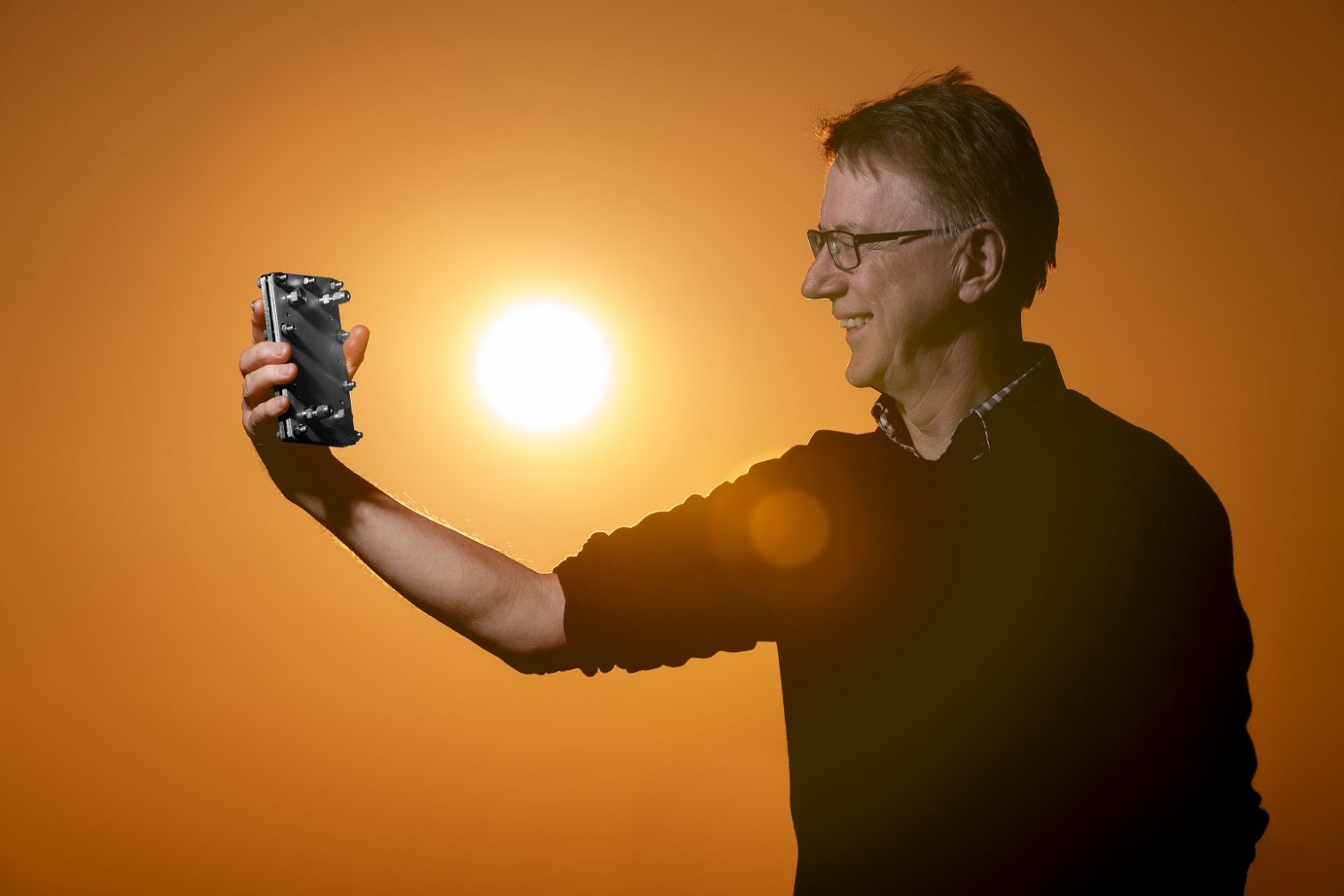Sustainable ammonia from renewables, air and water
One of the starting materials needed to make ammonia is nitrogen gas, N2. This abundant gas makes up 78 per cent of the air we breathe, but a very strong triple bond holds the two nitrogen atoms together. As a result, N2 is incredibly inert, meaning it doesn’t easily react with other chemicals. This triple bond requires activation, which is difficult to do.
Industrial scale ammonia production is based on a method, developed in the early 1900s, called the Haber Bosch process (HBP). However, it depends on fossil gas to make the hydrogen gas necessary as feedstock, and requires intense conditions of 400-500oC and 200 atmospheres (atm) of pressure.
This means the HBP generates an enormous carbon footprint (fully 1.5 per cent of annual global greenhouse gas emissions) and is highly unsustainable in the current climate crisis. Very large industrial plants (490kt of ammonia per year) are needed to achieve reasonable energy efficiency, which at best is only about 50 per cent.
It’s an uncomfortable truth that using such a carbon intensive, fossil fuel-reliant process to make fertiliser and grow our crops means our food is actually fossil fuel product. But scientists are working intensely to develop a more sustainable way to produce ammonia. And if we can do this, the potential emerges for ammonia to become a store of renewable energy that could replace coal.
Generation one is happening now. The carbon dioxide emissions of the HBP can be offset indirectly by purchasing carbon credits. Alternatively, carbon capture and storage technologies can be used to collect and sequester the carbon dioxide or upcycle it into small, useful molecules. This is possible but adds cost, and sequestration is not a feasible (or sensible) option in many locations.
Generation two involves a device called an electrolyser, which only uses water and a renewable energy source to generate hydrogen. This sustainably generated or ’green’ hydrogen is fed into the HBP to eliminate its reliance on fossil fuels.
Indeed, Siemens, which manufactures electrolysers, has successfully built a demonstrator that does exactly this using energy generated by wind turbines. A scaled-up demonstrator is being installed at the Yara ammonia plant in Karatha in northwest WA.
The capital costs of electrolysers is a limiting factor in the roll out of this technology and the pressure is on in the research sector to find ways – cheaper catalysts, fewer components – to decrease this cost.
Direct nitrogen reduction to ammonia
Generation three is based on the exciting research we do at Monash University and has the potential to free humanity from reliance on the HBP. We are synthesising ammonia by direct reduction of nitrogen gas (N2) on specially designed catalytic electrodes, using sustainable energy.
The ammonia is made electrochemically (a chemical reaction driven by electric current) by the nitrogen reduction reaction (NRR). Solar, or any renewable form of energy, provides the electricity to drive the reaction. The nitrogen is separated from air using well-established air-separation devices.
Water is also a key component – we need 1.6 tonnes per tonne of ammonia. Since Australia is a dry country, research into using sea water as a starting material is of high importance. The conditions of the NRR experiment are essentially ambient, up to 70 oC and 15 atm.









